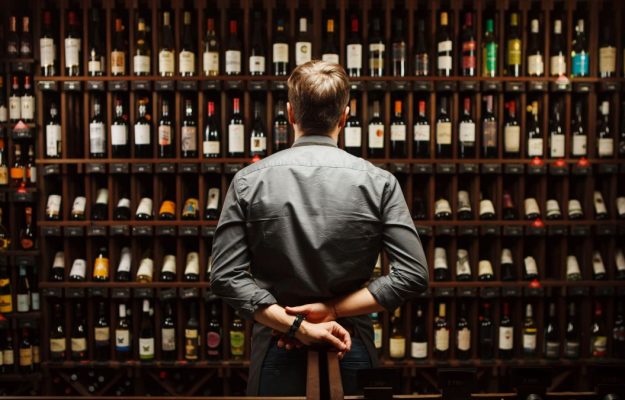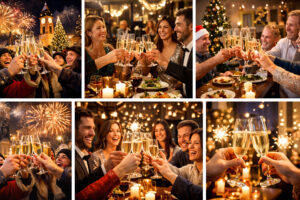A “hot” summer, with weather that does not help the wine product, but that does not reserve particular surprises from the point of view of consumption, with whites and the search for “drinkability” in the lead, in what is the home par excellence of a wine lover: the wine shop. There is no shortage, however, of interesting insights looking to the future, because the numbers say a lot, but not everything, especially from a broader perspective. Consumption nevertheless holds, even if a slight reduction is felt, and white wines (including sparkling wines) are those that are going for the most, accomplice to a record heat, but also following the trend, more and more consolidated, that sees a preference in the glasses, wines of more ready to drink, even if the reds, those that for characteristics are adapted to the season, still manage to carve out their space. Wine lovers are spending a little less, and the middle class, for the price of a bottle, is the one that is suffering the most; younger people are timidly approaching wine, but there is an important segment of the population, from 25 to 40 years old, that appears interested and curious to discover the peculiarities of a wine, an aspect, this, that bodes well and may lead to a growth in consumption in the short term. Another trend that is being confirmed in wine shops, and capable of directing the choices of wine-lovers, is that of the link between winery and territory, increasingly evaluated from a sustainability perspective. In an overall changing and rich landscape, the figure of the wine shopkeeper represents, therefore, a guarantee of absolute quality for the customer, because he or she is able to tell and explain the product, serve it at the right temperature and in the right way, as well as provide advice and stimulate curiosity. And in the large and complicated wine market, between the volumes of exports and those of large-scale distribution, there is a historical band, an important garrison of the territory that is the wine shops. Wine shops that evolve together with the figure of the wine merchant. On consumption, trends, the market and the evolution of a profession that remains central to the world of wine, WineNews took stock with Andrea Terraneo, president of Vinarius, the Association of Italian Wine Shops, which represents more than 120 members throughout the country, and Filippo Gastaldi, president of Aepi, the association of professional Italian wine shop owners.
Regarding trends in the glass, in terms of types and territories, that are characterizing this summer, Terraneo cites the “return of rosé and classic white wines, because it's hot in the summer, but an interesting signal is also coming from red wines that better withstand the temperatures of this season. Certainly we are talking about lighter red wines from an alcohol point of view, 12 and a half degrees or so, that can also withstand slightly more intense chilling, around 16 degrees, even 14 degrees in some cases, because we have to remember that the wine poured into the glass immediately becomes warmer, reaching two degrees higher than when we poured it. Wines such as a Schiava from Alto Adige, to give an example, that can withstand the cold, are interesting trends, while, from the wine merchant's point of view, I recommend not only chilling, but also using a bucket, because otherwise the work of chilling a bottle of wine is lost in a minute.” The long-rumored issue of alcohol content seems to be becoming more and more important, but is this really the case for the consumer who comes to the wine shop? “Certainly we have noticed in our analyses, and in the comparison with the final consumer”, Terraneo continues, ”a greater interest, especially in this very hot summer season, in wines with a lower alcohol content, because they facilitate the approach while still managing to give satisfaction to the consumer who can pair them with food. All of this, of course, must be thoughtfully and responsibly drunk. Low alcohol content and wine sustainability are two concepts for which there is attention, but sustainability is not to be paired, necessarily, with lower alcohol content: there is some confusion here, but it is also up to us and those dealing with the end consumer to explain this difference between sustainability, which is one aspect, and alcohol content, which is another”. Whites, rosés, but trends also highlight that drinking cold red wines is no longer taboo. Terraneo explains that this is “an interesting trend that is coming back thanks to the dialogue with the end consumer. Obviously, we are talking about red wines with a lighter structure, a lower alcohol content in some cases, which can withstand those 2 degrees of greater cooling than the canonical serving temperature of a red wine, which is 18-20 degrees. Perhaps there is a taboo that we have, perhaps, already helped to dispel, but it is good to remember that red wine, like all wines, should be handled at serving temperature and, especially this type, should not be served at room temperature, but always served at 18-20 degrees. Given the heat, the refrigerator's advice of a cooler temperature, to be managed with a thermometer to know where we are at, applies. This for a red wine would be ideal”.
For the wine market, from a wine shop perspective, Vinarius President Terraneo admits that there has been a slight contraction, but it is still not an alarming situation. “We have collected data, from the four-month period and in some cases also from the six-month period, which are a bit mixed, also due to the season that started cold from the weather point of view, which did not facilitate wine consumption, especially in tourist areas. However, broadly speaking, we can say that from our analysis comes out a slightly shrinking figure compared to a very positive season that was the 2023 season, and we could talk, in some cases, about a -3-5% decline in sales. It’s not an alarming sign yet, but one that pushes for more attention on the part of us wine merchants to manage our purchases and our volumes in anticipation for the near future, which is then this fall, and, most importantly, for the winter, which with the holidays for a wine merchant is a good chunk of work. So, certainly, we’re not worried, we’re not alarmed, we have a bell on, we’re paying attention and we’re looking to the next season trying to calibrate, where possible, our purchases”.
A market that “slips through the cracks” and in which large-scale retail numbers speak of decline, export numbers of growth, but in wine shops, which are then also somewhat the link between wineries and enthusiasts, how is the “sentiment”? Aepi President Filippo Gastaldi says that “indeed, as far as market numbers are concerned, we are confirming the general dynamic, also present in other channels, of a slight downturn, but compared to the last few years post-Covid that were a bit anomalous. However, it is not only from here that we wine merchants look at things, but also from the point of view of the customer’s interest, attention, curiosity, and cultural growth toward the world of wine, where, on the other hand, we see a lot of growth, especially from the new generation. I’m not talking about 18- to 20-year-olds approaching the world of wine, but potentially more spendthrift and interested generations, from 25 to 40 years old, and where there is a lot of interest, curiosity, and even desire to approach the world of wine from the knowledge side. And we, as wine merchants, in our places, but also outside, because, being professionals, we do consultations or evenings in restaurants and other channels, we are a reference point to provide the right knowledge and spread the passion to a new audience that is interested, and especially the female audience that is having a nice growth. So on the one hand there is the market with the numbers that yes, they are slightly down, although actually our places are very stable thanks to often historical and family wine shops, and then, on the other hand, there is the market in a more “passionate” perspective that instead we see strongly active and positive”.
Part of the job of today’s wine shopkeeper is also to make wine culture, but beyond that and the most basic aspect, which is selling and serving wine, how is this profession, more specifically, evolving, which is a stronghold, but still lives in a world that changes and therefore, as a result, must change as well? Gastaldi confirms that it is “a world that changes very quickly, because the market changes, and, I use a term that I don’t really like to juxtapose with wine, fashions change. But there are trends, and, for example, right now there is a lot of search for wines and winemakers that are strongly linked to the territory, farms that, above all, have respect for the environment in which they work. There is a strand of interest in the ecosystem and ethical work, focusing, however, always on quality, and that leads to research on “natural wines”: a new niche market where customers are finding a lot of interest and stimulation, perhaps to approach wine from another point of view that is not, only, that of consumption, of pure pleasure, but also of how a product is made. And this is where we come, a lot, into play, because we act as an intermediary between the producer, even the smallest, and the final consumer, who can also be interested and educated on his own, but who, surely, with in the experience and advice of a wine shopkeeper, who works 365 days a year in contact with wine and producers, sees a strong point”.
Regarding the signals launched by the market, from trends for types of wine to bottle prices, Gastaldi points out that “if we look at the summer season, certainly there is a strong growth on still white wines that, until recently, suffered a bit from competition from sparkling wines, and, clearly, from reds in another season. Still whites this year have, on the other hand, received a strong interest, and it is true that there is more curiosity towards more drinkable wines, despite the last few years, climatically, a bit difficult and with important alcohol contents, even if the experience, technology, work in the cellar and in the vineyard of the producers allow them to contain the alcohol content in a totally natural way, and to be able to approach the demands of the market, where, indeed, people are looking for wines with a bit less alcohol. I open and close a parenthesis on low-alcohol, dealcolated or alcohol-free wine; in our country this market is not a tangible reality, but it is being talked about for the future, for very young generations, who are certainly beginning to approach the world of wine and alcohol with a lot of responsibility. It may be a future we will see soon, that of market interest in non-alcoholic wine, but not now. As a price range, it is suffering a bit in the middle range, because the low-priced wines always have their market and the fine wines, although still slightly declining in other markets, have a nice consumption. If I have to say a value of the wines that go more in wine shops, having consulted with wine merchants all over Italy, we are in the 12-15 euro range”.
Copyright © 2000/2026
Contatti: info@winenews.it
Seguici anche su Twitter: @WineNewsIt
Seguici anche su Facebook: @winenewsit
Questo articolo è tratto dall'archivio di WineNews - Tutti i diritti riservati - Copyright © 2000/2026


























































































































































































